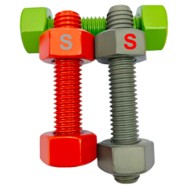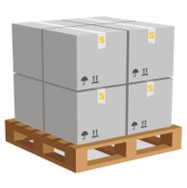
Cracking the code of garment sizing can feel like solving a secret cipher
- Spotting your body's key contours should begin the process
- Obtain exact bust, waist and hip figures before ordering
- Check manufacturer measurement charts when shopping
Eschew exclusive use of tag sizes because they can misguide Use your exact numbers to validate against the sizing table. Refining taste requires exploration and repeated testing.
Exploring how size tables really work
Apparel fit confusion ranks among common shopper complaints worldwide. Decoding sizing matrices can be as tricky as a crossword, with standards shifting between labels and regions. Even so, smart techniques and care will untangle the measurement maze.
- Primary step: identify whether the brand follows US, EU, UK or Asian norms. Often these include US, UK, European and Asian formats.
- Following that, check bust, waist, hip and inseam entries carefully. Contrast the listed dimensions with your own stats.
- Ultimately, consult the brand guide for recommended adjustments. Those guides often include practical notes, alterations and tips.
Locating the best fit during clothing selection
The territory of clothes measurements often confuses shoppers. Sized markers vary so a medium can match a different small. Discrepancies result from brand-specific scaling systems. Consequently first take careful measurements of your body. Use a tape to capture your chest, midriff and hip numbers. Avoid relying purely on your customary size label. Sizes may change even inside the same brand depending on style. Uncovering the correct size can mean sampling several styles.

Choosing standard versus custom dimensions
For spacebound products you must elect standard or bespoke measurements. Each selection offers distinct perks and potential downsides. Stock sizing gives ease and often a lighter price tag. Made-to-order dimensions accommodate unique spatial constraints
- Evaluate your needs and financial plan prior to selection
- Collect precise size data whether for room or clothing
- Study vendors and product variants to find the best match
In conclusion the best fit choice corresponds to your needs.
Mastering international size conversions
Translating sizes between nations and brands sometimes bewilders. Fortunately, reference guides reduce the complexity of conversions. Begin the process by understanding common apparel and shoe metrics. Use conversion charts to relate numbers across systems. Realise that personal shape plays a role in choosing size. Scan buyer feedback and fit notes for practical sizing insight.
An easy path to decoding garment sizes
Tackling clothing charts often feels baffling. Labels usually rely on individualized sizing methods, even so, simple tactics below will help you navigate sizing.
- Primary action: take accurate measurements with a fabric tape
- Next step: crosscheck your numbers against the chart
- Account for physique as proportions influence garment behaviour
Ultimately testing actual garments remains the most reliable way to confirm fit.
An extensive guide to both men's and women's fit ranges
Shopping without trying on increases sizing ambiguity for buyers. So we compiled a wide reference for standard men's and women's sizes. Whether buying pants, blouses or dresses these rules guide you.
- Primarily, be aware sizing shifts between labels and territories
- Subsequently, capture waist, hips, bust and chest numbers correctly
- Ultimately, pick the higher size when caught between measures
With these recommendations you can tackle sizing charts securely. Wishing you great shopping success!

Helping parents understand children's size charts
Choosing a child's size can be surprisingly challenging. Kids' fast development means you must re-measure frequently. Prefer the vendor's size guide over age-based assumptions. Take child's chest, waist and height readings accuratelyGetting bust, waist and hip sizes right every time
Securing a flattering fit depends on accurate body numbers. Use a pliable tape and friend for accurate circumference readings. Adopt a neutral upright posture with feet apart and relaxed shoulders
Understanding how sizes span from XS up to XXL
Contemporary fit systems vary widely across makers and markets. Differences among labels mean consistent sizing is uncommon. Studying the range spectrum illuminates the sizing puzzle. Together we'll unpack the real implications of size labels!
Supporting body diversity and inclusivity

Promoting body diversity helps everyone feel welcome. It advocates for breaking down rules that limit acceptable shapes. Let us develop norms that champion acceptance and self-esteem.
- Prefer actions that cultivate self-acceptance and respect Adopt routines that strengthen body confidence and care Size Chart Adopt routines that strengthen body confidence and care Select habits that promote acceptance and healthy self-view
- Remember that beauty exists across many shapes and sizes
- Refuse to accept narratives that limit what bodies should look like
- Make a habit of embracing body positivity in everyday life
